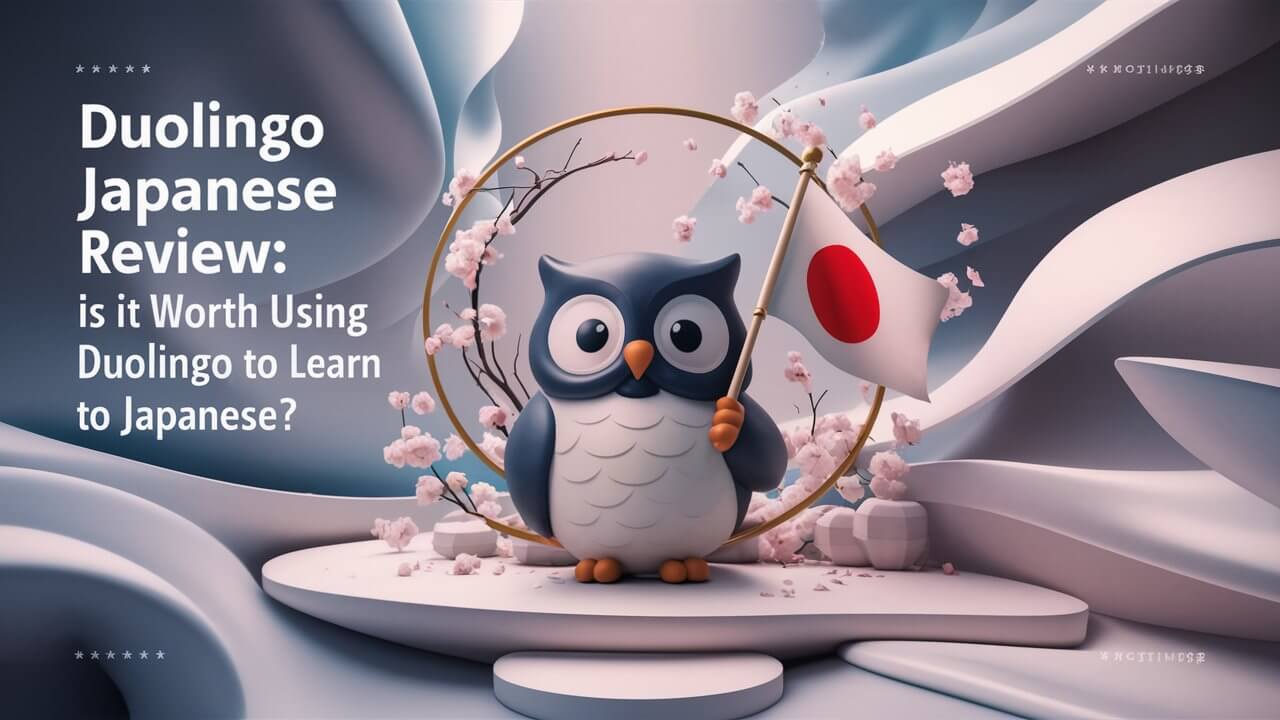Learning a new language like Japanese can be an exciting yet daunting task. With its unique writing systems, grammar structure, and pronunciation, it requires dedicated effort and the right resources. One popular language-learning app that claims to make the process fun and accessible is Duolingo. But how effective is it for learning Japanese specifically? This review examines the advantages and disadvantages of using Duolingo for studying Japanese.
What is Duolingo?
Duolingo is a free language learning platform that gamifies the process through bite-sized lessons, rewards, and a points system. It offers courses in over 40 languages, including Japanese for English speakers.
The app and website provide exercises that focus on translating words, phrases, and sentences between your native language and the language you’re learning. It’s designed to make language study feel more like playing a game, with levels, achievements, and virtual rewards to keep you motivated.
How Does Duolingo Teach Japanese?
Duolingo’s Japanese course starts by teaching you the hiragana and katakana writing systems. It then gradually introduces vocabulary through translation exercises, building up to full sentences.
The lessons present Japanese words and sentences using a mix of hiragana, katakana, kanji (Chinese characters), and romaji (romanized Japanese). You are asked to translate from English to Japanese, match words to images, transcribe audio recordings, and more.
Duolingo teaches grammar mainly through example sentences, with limited explicit explanations.
Pros of Using Duolingo for Japanese
While Duolingo has its limitations for learning Japanese, it does offer some advantages that make it worth considering as a supplementary tool:
Free and Easily Accessible
One of Duolingo’s biggest draws is that the core experience is completely free. You can access lessons on your computer or mobile device whenever you have a spare moment. This low barrier to entry makes it easy to get started without a big commitment.
Motivating Through Gamification
Duolingo’s game-like design with rewards and a progress tracking system can make studying feel more fun and addictive. Features like daily reminders and streaks motivate to keep practicing regularly.
Good for Vocabulary Building
Through its translation exercises and spaced repetition system, Duolingo can effectively help you build a basic vocabulary in Japanese. The bite-sized lessons make reviewing words less daunting.
Oral Practice with Voice Recording
While not flawless, Duolingo provides opportunities to practice pronunciation by recording your voice and receiving feedback. This basic oral practice is valuable for a language like Japanese.
Cons of Using Duolingo for Japanese
Despite its upsides, Duolingo has significant limitations when it comes to learning Japanese effectively:
Lacks Depth in Grammar Explanations
Duolingo’s hands-off approach to teaching grammar can be confusing for Japanese. With such a different sentence structure from English, explicit grammar instruction is valuable but largely lacking.
Limited Kanji Instruction
Duolingo teaches some kanji but doesn’t explain characters, radicals, readings, or stroke order, so extra study is needed.
Audio Quality Issues
Many users have reported issues with the audio recordings in Duolingo’s Japanese course, including incorrect pronunciations, robotic delivery, and volume inconsistencies across clips.
Not Comprehensive Enough for Fluency
Duolingo can provide a great introduction, but its vocabulary and skills are too limited to enable full fluency on its own. You’ll need to combine it with other, more robust resources.
User Reviews and Experiences
Reviews from actual users of Duolingo’s Japanese course are quite mixed:
Some praise it as a fun, accessible way to pick up basic vocabulary and get exposure to the language. For absolute beginners on a budget, it can be a gentle starting point before graduating to more comprehensive resources.
Experienced learners criticize Duolingo for lacking grammar depth, insufficient kanji coverage, and ineffective production exercises. More dedicated resources are needed to progress beyond the beginner level.
Duolingo Japanese Compared to Other Resources
To better evaluate Duolingo’s strengths and weaknesses, it’s helpful to contrast it with some alternative options for learning Japanese:
Vs Apps Like LingoDeer and Bunpro
Paid apps like LingoDeer and Bunpro take a more structured, comprehensive approach to teaching reading, writing, grammar explanations, and more. While less gamified, they offer clearer lesson pathways and tend to be more effective for advancing beyond a beginner level.
Vs Textbooks and Classroom Courses
Traditional paper textbooks and structured classroom courses with a teacher provide explicit grammar instruction, structured progression, and more rigorous practice. However, they require more investment of time and money compared to Duolingo’s pick-up-and-go format.
Using Duolingo as a Supplemental Tool
Rather than a standalone solution, many learners recommend using Duolingo as just one piece of a broader study plan for Japanese. Its strengths in vocabulary acquisition and pronunciation can supplement core learning from textbooks, apps, media immersion, and more.
Tips for Getting the Most Out of Duolingo Japanese
If you do choose to use Duolingo for learning Japanese, here are some tips to maximize its benefits:
Combine with Other Resources: Don’t rely on Duolingo alone. Use it alongside grammar books, kanji study tools, conversation practice, and other comprehensive resources for balanced learning.
Use Discussions/Forums for Explanations: When you encounter confusing grammar or truly can’t decipher the “notes,” check the app’s discussion forums where users often provide clearer explanations.
Create Your Own Flashcard Decks: Export new vocabulary from Duolingo into a dedicated flashcard app like Anki for active recall practice and better retention.
Set Realistic Expectations: Understand that Duolingo alone cannot make you fluent in Japanese. View it as a supporting tool for vocabulary exposure and bite-sized practice, not a complete curriculum.
Is Duolingo Worth It for Learning Japanese?
So in summary, is Duolingo worth using as part of your Japanese learning journey? The answer is…it depends.
For absolute beginners looking for a free, low-commitment way to get initial exposure to basic vocabulary and pronunciation, Duolingo can be a fun and motivating first step. Its gamified approach helps build basic skills without becoming overwhelming.
However, Duolingo’s lack of structured grammar lessons, limited kanji coverage, and lack of production practice means it should not be your only resource if you aim for anything beyond a novice level.
More committed learners are better served by combining Duolingo’s strengths with grammar books, comprehensive apps/courses, consumption of native materials, and oral practice to accelerate their skills in all areas.
With realistic expectations and the right supplemental resources, Duolingo can be a useful component of your Japanese study plan focused on vocabulary acquisition. But don’t mistake it for an all-in-one solution to achieve total fluency.






